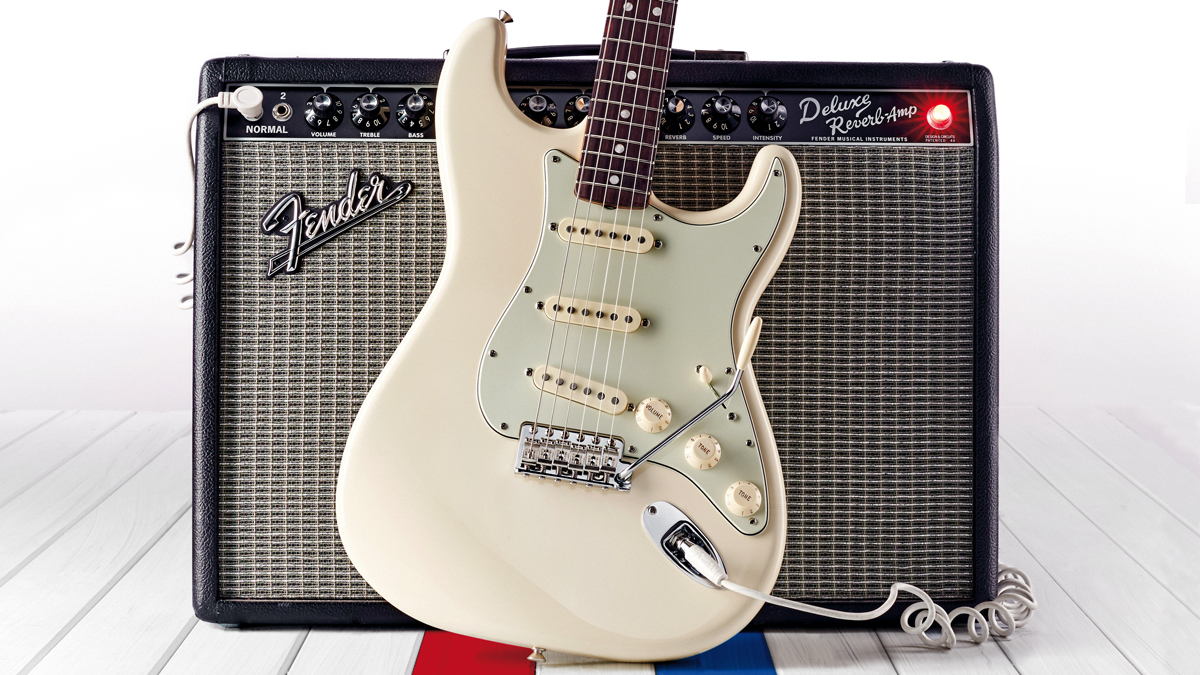Review round-up: mid-priced Strat-style guitars
Four of the best S-types from Fender, G&L, Ernie Ball and Chapman
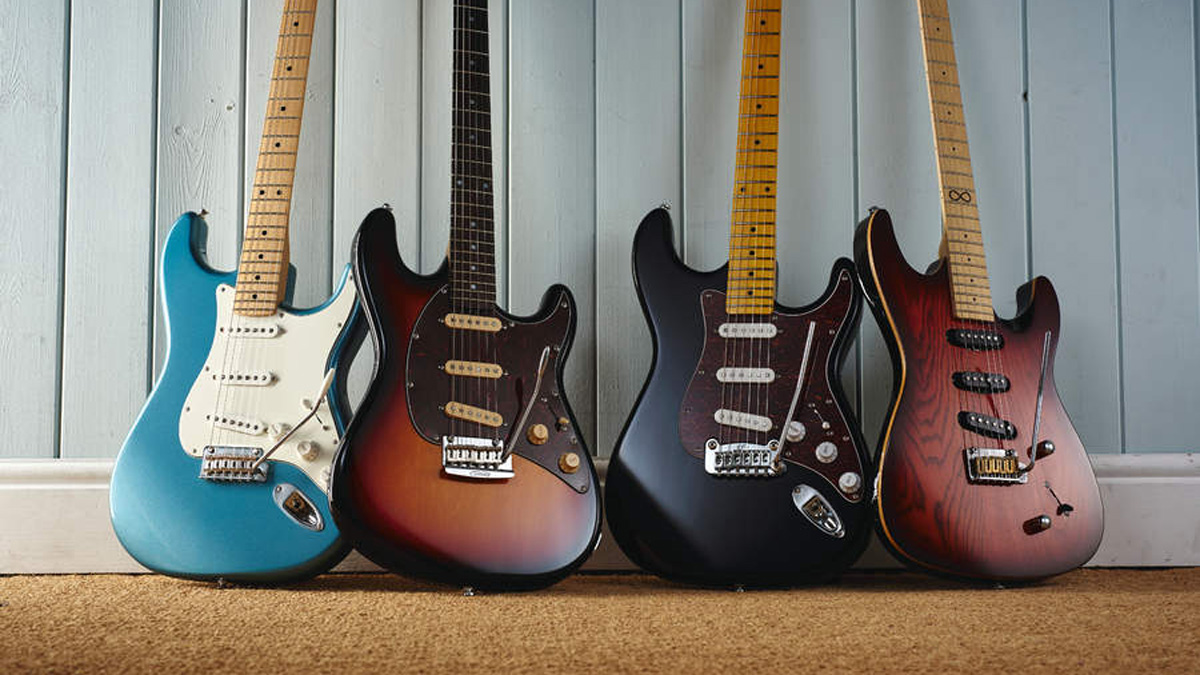
It’s hard to believe that the Fender Stratocaster is officially an old-age pensioner.
Yes, it was 64 years ago that Leo Fender and his team unveiled the follow up to the Telecaster. The Strat was the result of feedback from Fender customers. In direct contrast to the two-pickup, hardtail, slab-bodied Tele, the punters wanted something with three pickups, a well-designed vibrato unit and a more comfortable contoured chassis.
The Stratocaster has been in constant production since 1954 and it made its presence felt in just about every music genre. It’s the guitar that links Buddy Holly, Jimi Hendrix, Stevie Ray Vaughan and Simon Neil of Biffy Clyro. It’s also the most imitated guitar of all time. Practically every guitar manufacturer has been, ahem, influenced by its key features.
Now, in this group test, the latest incarnation of those original ’54 guitars, the Mexico-made Fender Player Stratocaster, rubs shoulders with three similarly spec’d contenders.
Like the Player Stratocaster, the Indonesia-born G&L Tribute Legacy and China- sourced Sterling By Music Man CT50 Cutlass are descendants of guitars designed by Leo Fender. Meanwhile, the Indonesia-made Chapman ML-1 Traditional sprung forth from the hirsute noggin of Brit guitarist and djent’s outfitter, Rob Chapman. Let’s plug in...
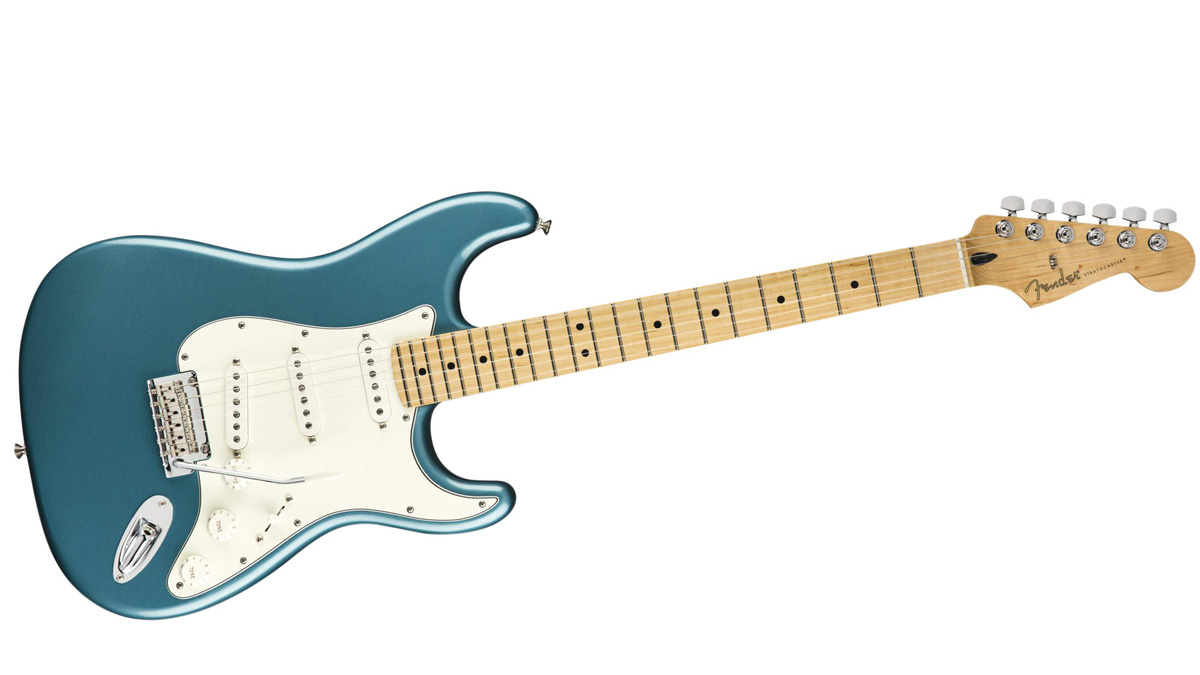
Fender Player Stratocaster
Nice looking guitar. Shame I prefer a slicker, satin-finish neck...
If that’s your preference, then you’re well in here. While the Player’s headstock face and fingerboard are coated in a gloss urethane, the rest of the C-profile neck has a satin urethane feel. It’s your classic ‘best of both worlds’ scenario. The neck has vintage spec good looks but your hand won’t get stuck when your palm gets clammy...
Are these classic-sounding Fender single coils?
They are slightly higher gain than say 50s and 60s Strat pups but, yeah, those iconic ‘glassy’ clean tones, and Jimi Hendrix Little Wing in-between sounds, are all present and correct with the Player. Fender has also tweaked this model to offer a dedicated bridge tone control.
What’s the deal with the vibrato?
Unlike vintage six-screw Stratocaster models, the Player’s vibrato has two pivot points, Floyd Rose style. Used on its US-made guitars for years, this arrangement gives the vibrato an ultra-smooth feel. While you don’t get locking bits and bobs here, the Player’s tuning stability is excellent.
At a glance
Key Features: Alder body with gloss polyester finish, 648mm [25.5"] scale bolt-on maple neck, 241mm [9.5"] radius maple fingerboard with gloss urethane finish, 22 medium jumbo frets, 3 x Player Series Alnico 5 single coil pickups, 1 x volume, 2 x tone, five-way pickup selector blade switch
Finish: Tidepool [as reviewed], Buttercream, Black and 3-Colour Sunburst, Sonic Red, Sage Green Metallic, Polar White
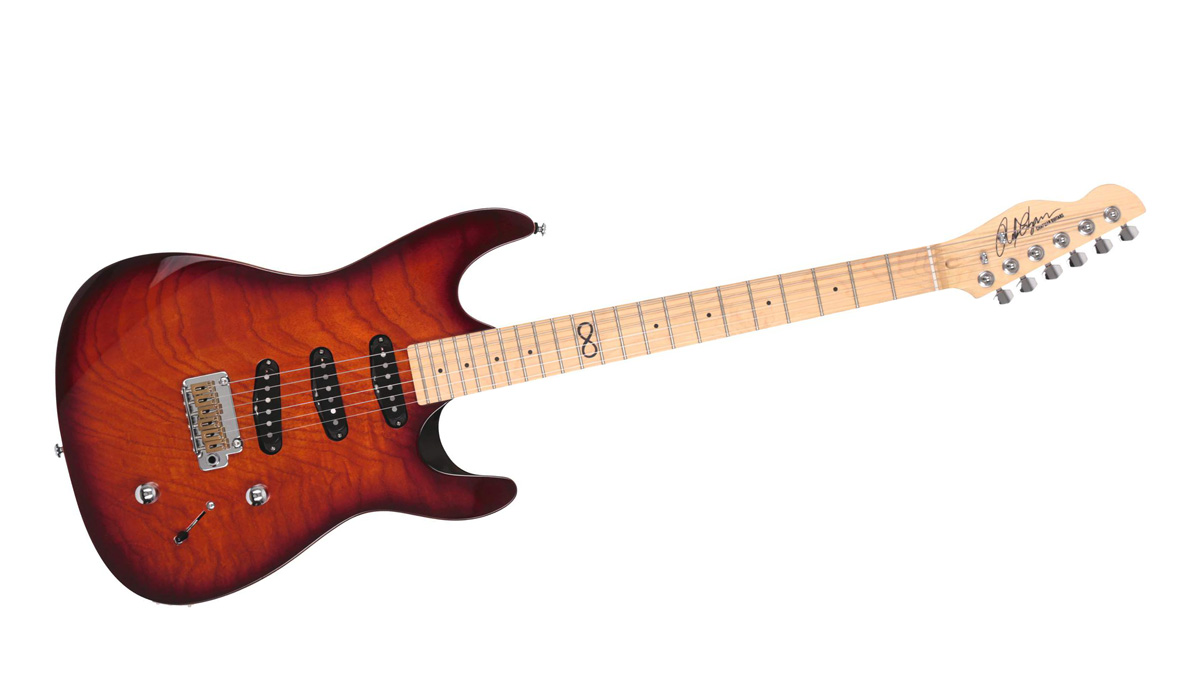
Chapman ML-1 Traditional
This thing looks too good to be true for less than 500 quid...
The ML-1 Traditional definitely punches above its price tag in the looks department. Allowing the ash top to shine through, and exposing its edges for a natural body binding effect, gives the guitar a boutique vibe.
Has it got the usual fire-breathing Chapman pickups?
Nope. Despite the ridiculous name, you have to admire Chapman’s restraint here. These direct-mounted Venus Witch Zerø things are proper vintage-voiced single coils. A smart move. There’s no point speccing an ash body if you’re going to muzzle its natural voice with a set of overwound pickups.
How’s the playability?
It’s damn good. Big frets and lightly-rolled fingerboard edges make the neck incredibly easy to navigate. Given the brand’s metal heritage we expected this Chapman to come with a super-flat fingerboard radius. Instead, it’s almost identical in feel to the Fender. The bottom line with this Chapman? The ML-1 Traditional looks like a modern rock guitar but it has bags of old-school feel and charm...
At a glance
Key Features: Offset solid ash body and figured ash top with gloss finish, satin finish 648mm [25.5"] scale bolt-on maple neck and 240mm [9.4"] radius maple fingerboard, 22 jumbo frets, 3 x Chapman Venus Witch Zerø single coil pickups, master volume, master tone, five-way pickup selector blade switch, chrome two-point vibrato with brass block and saddles
Finish: Coffee [as reviewed] and Lunar
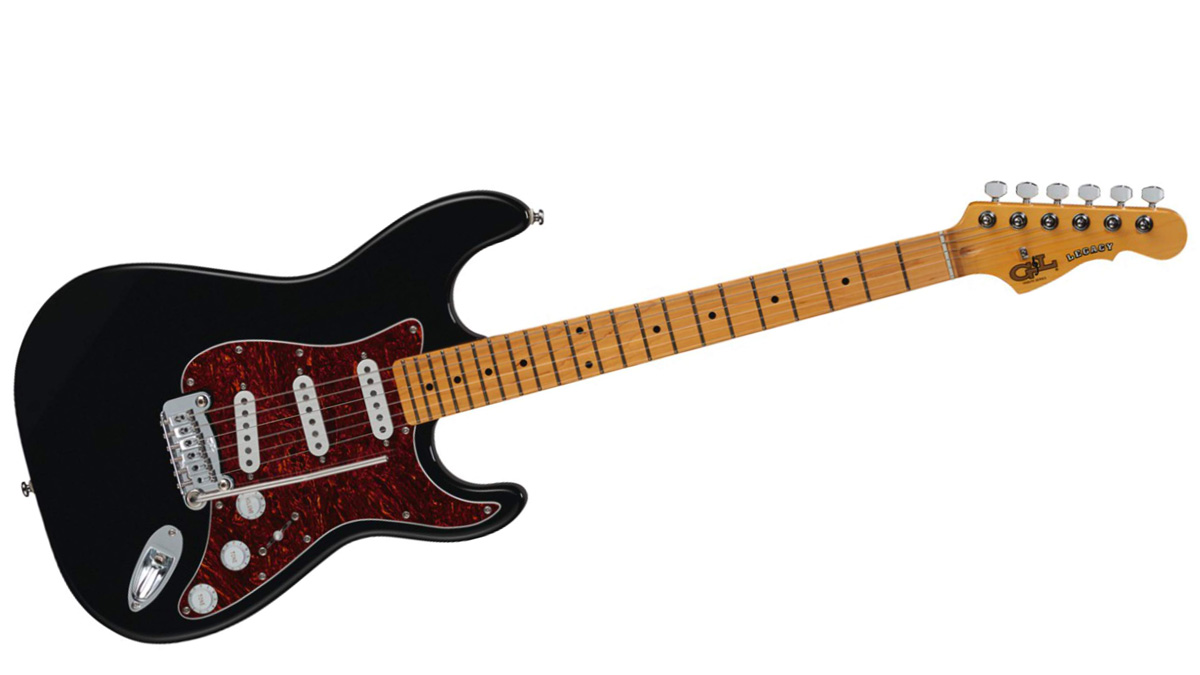
G&L Legacy Tribute
What’s the sizzle on the Legacy then?
The basswood body has all the classic 50s contours, and the CLF-100 pickups are designed to take us back to that era too. Loaded with Alnico V magnets, these pups are the result of research by G&L’s Paul Gagon. He studied Leo’s old blueprints and some vintage Strats to voice these things.
The vibrato looks substantial...
That’s Leo Fender’s Dual-Fulcrum design. This much-loved unit floats so you can push its arm down to detune the strings or pull it up to stretch ’em. Oh, and that robust-looking vibrato arm is fashioned from tough but lightweight aluminium.
What else do I need to know?
Well, the late Mr Fender was a relentless guitar tweaker - the Legacy also has a souped-up brother, the S500 - and the Legacy reflects that obsession with an expanded tone section. The onboard PTB (Passive Treble & Bass) circuitry offers a wider range of tones than the other guitars in this group test. This is also the only guitar here with an entirely glossy neck - but not everyone goes for the satin-coated look.
At a glance
Key Features: Offset solid basswood body with gloss finish, 648mm[25.5"] scale bolt-on maple neck and 305mm [12"] radius maple fingerboard with gloss finish, 22 medium jumbo frets, 3 x CLF-100 Alnico V single coil pickups, master volume, PTB circuitry, chrome/ nickel Dual-Fulcrum vibrato and die-cast tuners
Finish: Gloss Black [as reviewed], Fullerton Red, Surf Green, Natural Gloss [with swamp ash body]
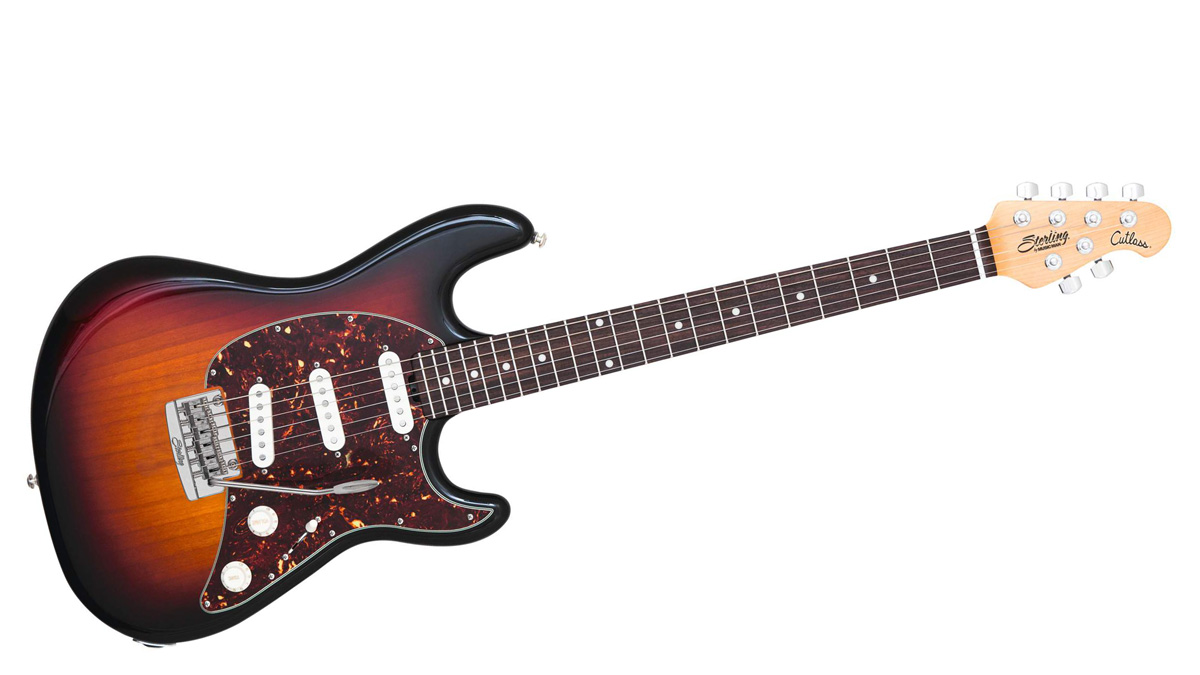
Sterling By Music Man CT50 Cutlass
What’s the USP of this one?
For a kickoff, this is the only guitar here spec’d with locking tuners. Then there’s the rest of the neck. The Cutlass features the V neck profile found on mid-50s Fender Stratocasters. If you’ve never experienced a neck like this, it slots snugly into the V-shaped nook between your thumb and fore finger like a big maple Tetris piece.
How’s the upper fret access?
Like the Chapman ML-1 Traditional, the Cutlass comes brandishing a sculpted neck/body join. So, yeah, making your way up to fret number 22 is easy as pie. We also particularly like the fact that the neck is secured to the body with five big, wood screws. That ultra-stable union promises good sustain, as well as rock-solid tuning.
Does the vibrato float?
Nope. This is most definitely a one-way street. Many players prefer their vibratos to sit on the guitar’s top when at rest. They reckon it provides better tone, sustain and tuning stability than a floating whammy. Your man, Eddie Van Halen, would certainly agree with that...
At a glance
Key features: Offset solid basswood body with gloss finish, 648mm [25.5"] scale bolt-on maple neck and 305mm [9.5"] radius rosewood fingerboard with satin finish, 22 narrow frets, 3x single coil pickups, master volume, master tone, five-way pickup selector blade switch, chrome vintage-style vibrato and locking tuners
Finish: 3-Tone Sunburst [as reviewed], Fiesta Red, Olympic White, Black, Seafoam Green

Head to head
It’s no coincidence that these guitars find themselves embroiled in the same group test.
Alongside the obvious similarities in pickup format and bolt-on construction, all four guitars share a common 648mm (25.5") scale length. This measurement is essential for the classic Strat snap in the top strings, and twang in the fatter ones.
Upper-fret access is easier with the sculpted heels of the Chapman ML-1 Traditional and Sterling Cutlass, but we didn’t have too many problems with the Fender and G&L guitars. It’s worth noting that the Cutlass has vintage-style narrow frets. The others have medium jumbo efforts, which are easier to deal with when you’re bending strings above the 12th fret.
Tonally, all four guitars live in the same postcode. Bridge pups are typically bright and twangy. The middle and neck units offer increasing levels of warmth, yet unlike muddy sounding humbuckers, you get loads of clarity no matter how heavy the overdrive. There are distinctions. The G&L has just a touch more warmth than the other guitars. There’s some real fatness here, which works great for blues noodling.
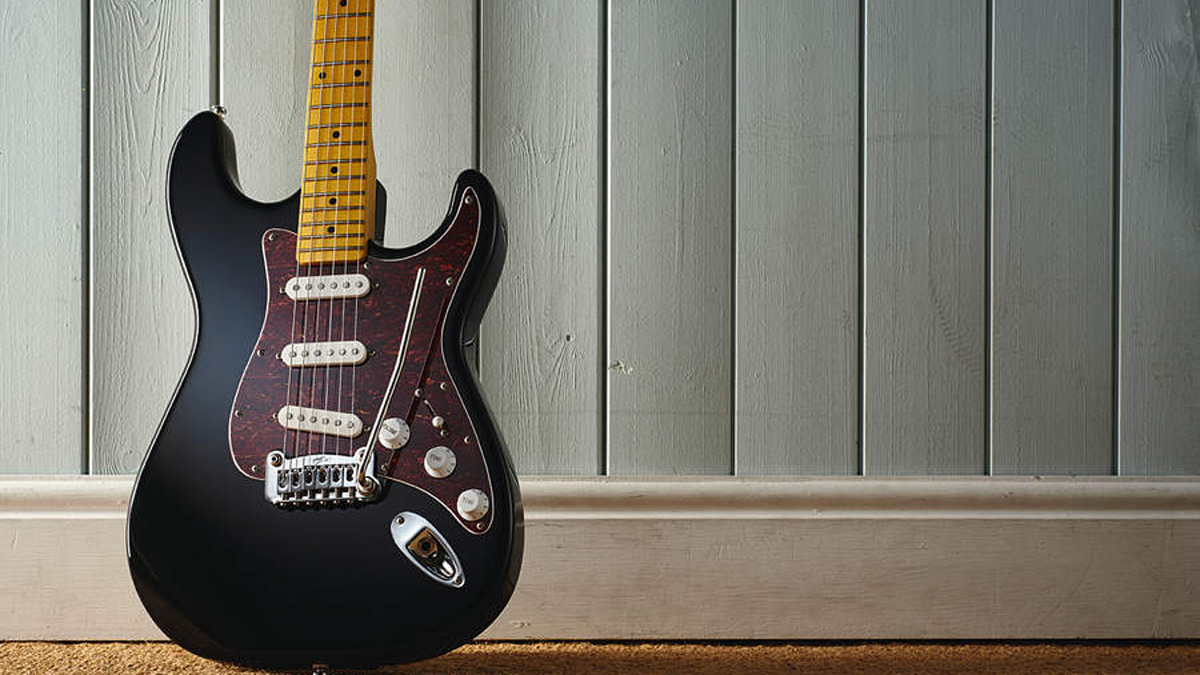
The Fender’s pups sound like vintage classics with a bit more muscle. They push your dirty channel a bit further and there’s crystal- clear clarity on every setting. We love the smooth vibrato unit, too. If you want to hear one of these twin-pivot ‘ floating’ Fender whammy jobs at its best, Spotify Jeff Beck’s Where Were You.
Regrets? Yeah, we have a few. The G&L’s Dual-Fulcrum vibrato is stiff. It sticks wherever we park it, making tuning stability impossible. It’s a shame, as our previous experiences with this vibrato model have always been positive. The Chapman plays great but there are some sharp fret ends to contend with. Don’t get us wrong, it’s not like arm wrestling with Edward Scissorhands, but they’re noticeable. Just make sure your ML-1 Traditional is fine before you part with your money.
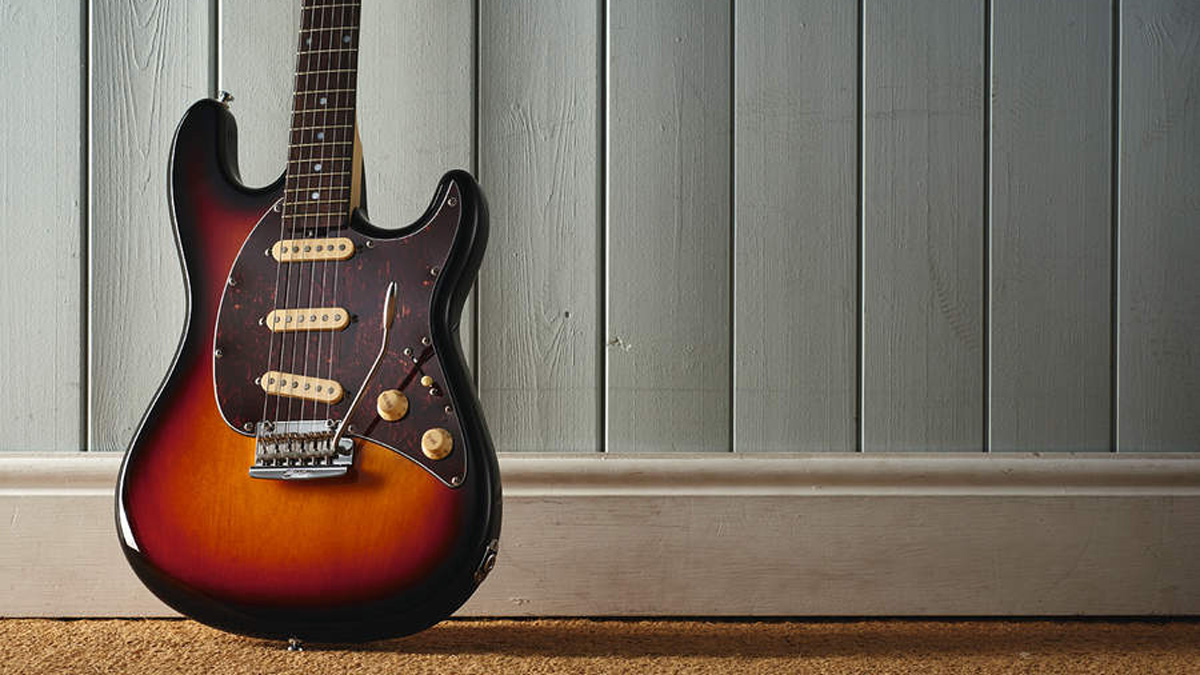
Final verdict
At the age of 64, the Fender Stratocaster is almost as old as The Rolling Stones, and in much better shape.
Each one of the guitars in this group test owes a huge debt to Leo Fender’s second oldest solidbody, yet they also have attributes of their own. Even if it didn’t show its vibrato off to the best effect on this occasion, the G&L Legacy scores big points for its vintage-voiced pickups. The tonal tweaks available are also pretty impressive.
Likewise, the Sterling Cutlass. The pickups have that crystal-clear delivery we expect from classic single coils. We also loved this guitar’s V-profile neck. It might sound weird to the uninitiated but this old-school 50s shape is something you have to try. The Chapman ML-1 defines that old saying ‘bang for the buck’. Again, we like the vintage warmth on offer. The sharp frets ends are annoying but we’ll wager not all ML-1 Traditional’s are like this.
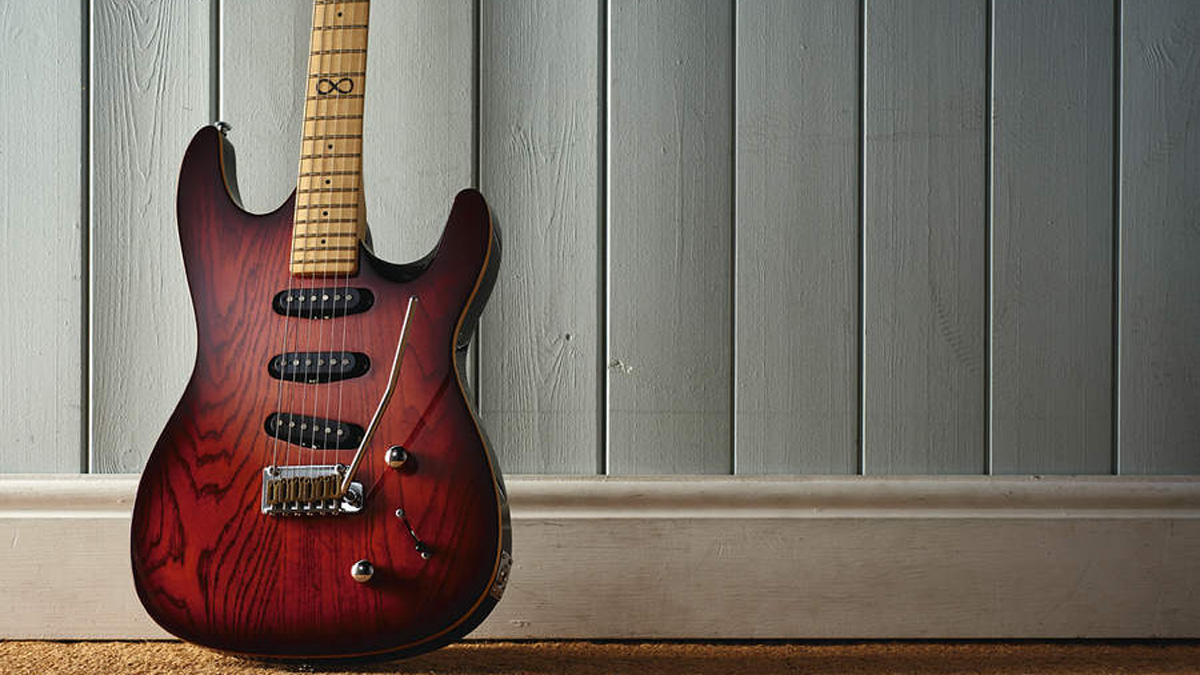
That leaves the Fender Player Stratocaster. Ironically, this guitar has less of a vintage voice than the other contenders.
The pickups offer hi-fi versions of classic Fender tones. Yes, you can get all the trademark Strat tones. There’s just more presence and that extra touch of grunt works well for dirty settings. They add up to this guitar’s status as the best all-rounder here. No matter what music you like, the Player can handle stuff its 64-year-old grandad couldn’t have dreamed of...
Best all-rounder: Fender Player Stratocaster
5 out of 5
Best value: Chapman ML-1 Traditional
4 out of 5
Best for blues: G&L Legacy Tribute
4 out of 5
Best for vintage: Sterling by Music Man CT50 Cutlass
4 out of 5
“To be honest, I feel like I am playing a high-end Gibson guitar”: Epiphone and Guitar Center team up for a colourful riff on a cult classic with the limited edition run Les Paul Custom Widow
“The humbuckers give it so much power and such a wide variety of tones while the destruct button really sets it apart from just about any other Tele”: Fender unveils the Mike Campbell “Red Dog” Telecaster
“To be honest, I feel like I am playing a high-end Gibson guitar”: Epiphone and Guitar Center team up for a colourful riff on a cult classic with the limited edition run Les Paul Custom Widow
“The humbuckers give it so much power and such a wide variety of tones while the destruct button really sets it apart from just about any other Tele”: Fender unveils the Mike Campbell “Red Dog” Telecaster
